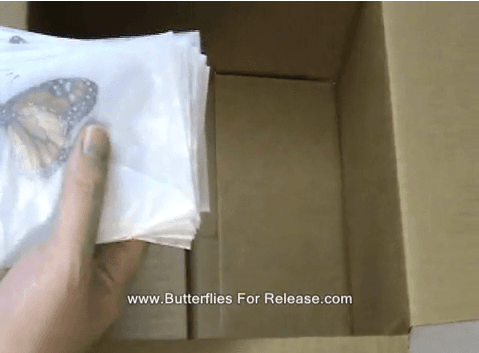Releasing butterflies is the latest trend at weddings, and also at funerals and other special occasions.
It is believed that butterflies take dreams and wishes to the sky and bring good fortune. They are also considered a symbol of rebirth or new beginnings. This latest fad comes from South America and is spreading around the world.
There are multiple companies online offering butterfly release services, describing it as a unique experience to enchant everyone.
Anti-animal cruelty activists and conservation groups deem the practice harmful to the winged creatures and to the environment.
These beautiful and delicate creatures can be ordered online to be shipped thousands of miles. They are bred in farms and are induced into hibernation by reducing the temperature. They are then packed in small, flat envelopes and shipped in boxes with cold packs. Companies instruct you to replace the cold packs regularly until about 1.5 hrs before your desired time of release.


Monarch butterflies are put into hibernation, then packed for shipping to be released at an event. (YouTube Screenshot/ButterfliesForRelease.com)
Those who sell the butterflies say the process does not harm the butterflies and can help some species populate. For example, the most common type of butterflies used to release are Monarchs—a species in decline. Painted Ladies are also popular, and other species are available upon request.
Many organizations, such as the Cambridge Butterfly Conservatory, the American Museum of Natural History, the National Wildlife Federation, the Washington Department of Fish and Wildlife, and the North America Butterflies Association, to name a few, discourage their use for a number of reasons.
Butterflies are very important to the ecosystem, since they act as pollinators and are indicators of the ecosystem’s wellbeing.
Farming, hibernating, shipping, and finally releasing them, is cruel, as some die before reaching the destination; others cannot fly again, and those that can will find themselves in an environment where they don’t belong.
Not only does the practice promote a commercial market for, and exploitation of, living butterflies, it can also damage the local species, since the released butterflies might spread diseases and parasites to local populations.
The release might not even have the intended enchanting effect, since it could offend conservation-minded guests, or upset everyone if the butterflies arrive dead or in poor condition.





